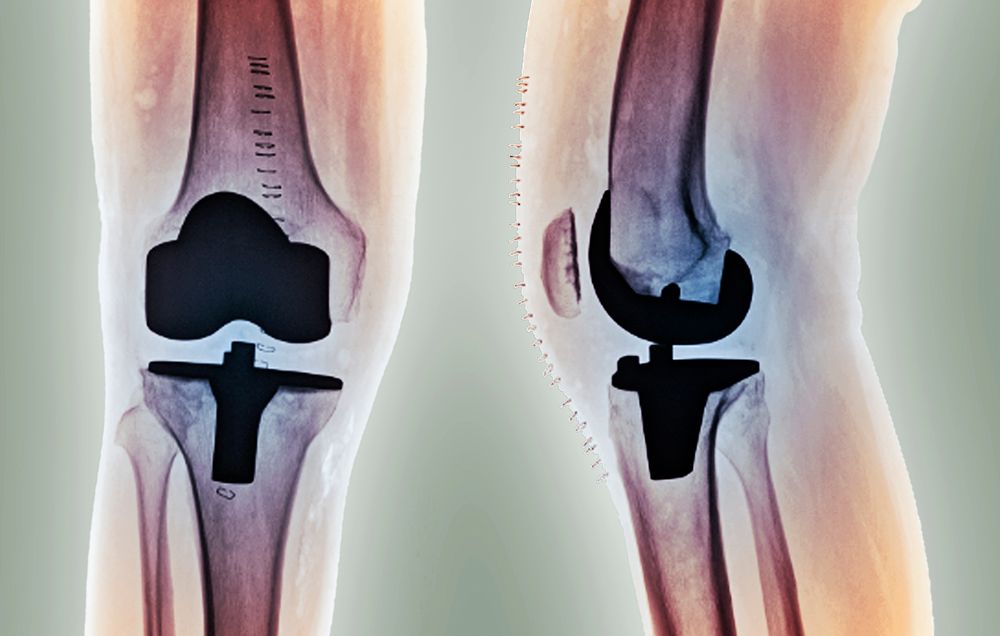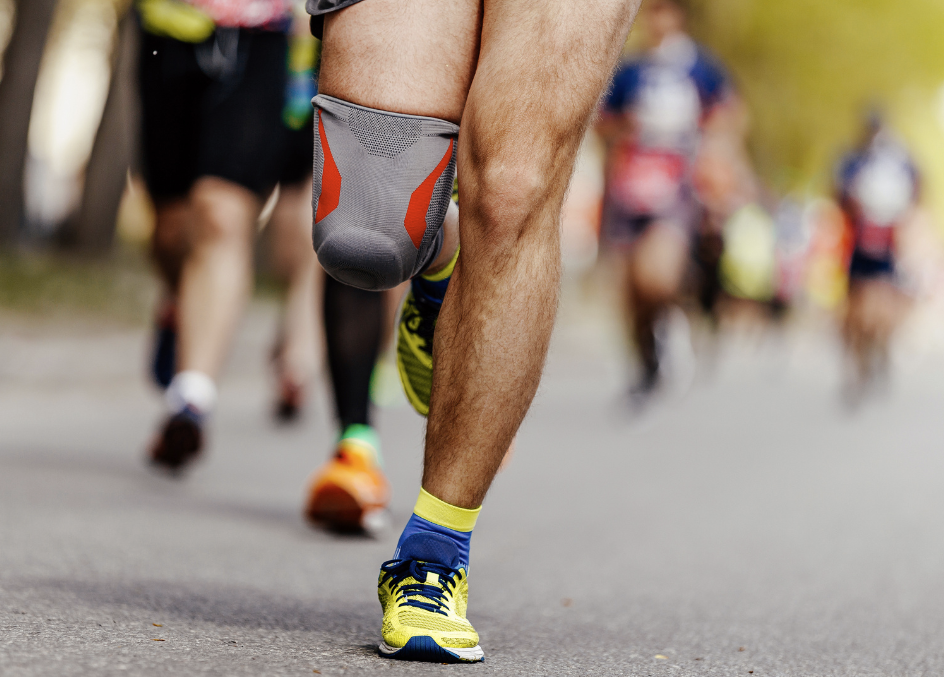tl;dr: Yes, you can jog after knee replacement

If you’ve recently undergone a knee replacement surgery and are wondering can you jog after knee replacement, the answer is yes! Jogging after knee replacement can have numerous benefits for your overall health and well-being.
In this article, we will explore the advantages of jogging after knee replacement, factors to consider before starting, how to prepare for jogging, techniques to protect your knee, common concerns and precautions, and ultimately conclude that jogging can be a safe and beneficial activity post-surgery.
Benefits of jogging after knee replacement

Improved cardiovascular health
Jogging is a great way to improve your cardiovascular health. It increases your heart rate, strengthens your heart muscles, and improves blood circulation throughout your body. Regular jogging can help reduce the risk of heart disease, lower blood pressure, and improve overall cardiovascular fitness.
Increased strength and endurance
Jogging after knee replacement can help increase your leg strength and endurance. As you gradually increase your jogging distance and intensity, your leg muscles will become stronger, allowing you to perform daily activities with greater ease. Stronger muscles also provide better support to your knee joint, reducing the risk of future injuries.
Weight management
Maintaining a healthy weight is crucial for the longevity of your knee replacement. Jogging is an effective way to burn calories and manage your weight. By incorporating jogging into your routine, you can increase your daily calorie expenditure, which can help you achieve and maintain a healthy weight. This, in turn, reduces the stress on your knee joint and improves its overall function.
Factors to consider before jogging after knee replacement

Consultation with your surgeon
Before starting any exercise program, it is essential to consult with your surgeon or healthcare provider. They will assess your specific condition and provide personalized guidance on when it is safe to start jogging after knee replacement. Your surgeon may consider factors such as the type of knee replacement, your overall health, and the success of your rehabilitation process.
Time since surgery
The time since your knee replacement surgery is an important factor to consider before jogging. Generally, surgeons recommend waiting at least 3-6 months after surgery before engaging in high-impact activities like jogging. This waiting period allows your knee to heal properly and reduces the risk of complications.
Overall health and fitness level
Your overall health and fitness level play a significant role in determining when you can start jogging after knee replacement. If you have any underlying health conditions or are not physically fit, your surgeon may recommend delaying jogging until you have improved your overall health and fitness through other low-impact exercises and physical therapy.
Preparing for jogging after knee replacement

Physical therapy and rehabilitation
Before starting jogging, it is crucial to complete a comprehensive physical therapy and rehabilitation program. This program will help strengthen the muscles around your knee, improve your range of motion, and ensure proper healing. Your physical therapist will guide you through exercises specifically designed to prepare your knee for jogging.
Gradual progression and proper warm-up
When starting to jog after knee replacement, it is important to progress gradually. Begin with short distances and slow speeds, gradually increasing both as your knee becomes stronger and more comfortable. Additionally, always remember to warm up before jogging by performing dynamic stretches and light exercises to prepare your muscles and joints for the activity.
Choosing the right footwear
Selecting the right footwear is crucial for protecting your knee during jogging. Invest in a pair of well-cushioned running shoes that provide adequate support and stability. Consider consulting with a professional at a specialty running store to ensure you choose the right shoes for your specific needs.
Techniques to protect your knee while jogging

Proper form and posture
Maintaining proper form and posture while jogging is essential to protect your knee. Keep your back straight, shoulders relaxed, and land softly on your midfoot. Avoid overstriding, as it can increase the impact on your knee joint. Engage your core muscles to provide stability and support to your knee.
Listening to your body
Pay attention to any discomfort or pain during jogging. If you experience sharp or persistent pain, it is important to stop and rest. Pushing through pain can lead to further injury. Listen to your body and adjust your jogging routine accordingly. If necessary, consult with your healthcare provider for further evaluation.
Using knee braces or supports
If you feel the need for additional support, consider using knee braces or supports while jogging. These can provide stability to your knee joint and reduce the risk of injury. Consult with your healthcare provider or physical therapist to determine if using knee braces or supports is appropriate for your specific situation.
Common concerns and precautions

Pain or discomfort
It is normal to experience some discomfort or mild pain when you first start jogging after knee replacement. However, if the pain is severe, persistent, or accompanied by swelling, it is important to stop and consult with your healthcare provider. They can evaluate your condition and provide appropriate guidance.
Impact on the knee implant
Modern knee implants are designed to withstand the forces generated during jogging. However, it is still important to be mindful of the impact on your knee joint. Avoid excessive pounding or high-impact activities that may put excessive stress on the implant. Stick to smooth surfaces and consider alternating jogging with low-impact exercises to reduce the strain on your knee.
Other activities to avoid
While jogging can be a safe activity after knee replacement, there are certain activities you should avoid to protect your knee. These include high-impact sports like basketball or soccer, activities that involve sudden changes in direction or jumping, and activities that put excessive stress on your knee joint. Always consult with your healthcare provider before engaging in any new activities.
Conclusion

In conclusion, jogging after knee replacement is generally safe and can provide numerous benefits for your cardiovascular health, strength, endurance, and weight management. However, it is important to consider factors such as consultation with your surgeon, the time since surgery, and your overall health and fitness level before starting. By preparing properly, using the right techniques, and listening to your body, you can protect your knee and enjoy the benefits of jogging after knee replacement. Remember to always consult with your healthcare provider for personalized guidance and to address any concerns or questions you may have
FAQ on Can you jog after knee replacement?
-
How long after knee replacement can you jog?
The timeline for jogging after knee replacement surgery varies for each individual. It is important to consult with your surgeon or physical therapist for specific guidance. In general, most patients are able to start jogging around 3 to 6 months after surgery, once they have regained sufficient strength and stability in their knee.
-
What activities cannot be done after knee replacement?
While knee replacement surgery can greatly improve mobility and quality of life, there are certain activities that may put excessive stress on the new knee joint and should be avoided. These activities include high-impact sports such as running, jumping, contact sports, and activities that involve twisting or pivoting on the knee. It is important to follow your surgeon’s recommendations and engage in low-impact exercises and activities that promote joint health and longevity.
-
How do I start jogging after knee surgery?
Starting jogging after knee surgery requires a gradual and progressive approach. Here are some general steps to follow:
1. Consult with your surgeon or physical therapist to ensure you are ready for jogging.
2. Begin with a proper warm-up, including stretching exercises for the muscles around the knee.
3. Start with short intervals of jogging mixed with walking or slow jogging.
4. Gradually increase the duration and intensity of your jogging sessions over time.
5. Listen to your body and pay attention to any pain or discomfort. If you experience any issues, consult with your healthcare provider.
Remember, everyone’s recovery is different, so it is important to follow personalized guidance from your medical team. -
Can you run and hike after knee replacement?
While running and hiking can be enjoyable activities, they may put significant stress on the knee joint, especially after knee replacement surgery. It is generally recommended to avoid high-impact activities like running and hiking on uneven terrain. However, some individuals may be able to engage in light jogging or hiking on flat surfaces with the approval of their surgeon or physical therapist. It is crucial to consult with your healthcare provider to determine what activities are safe and appropriate for your specific situation.
Originally posted 2023-08-01 11:02:41.

